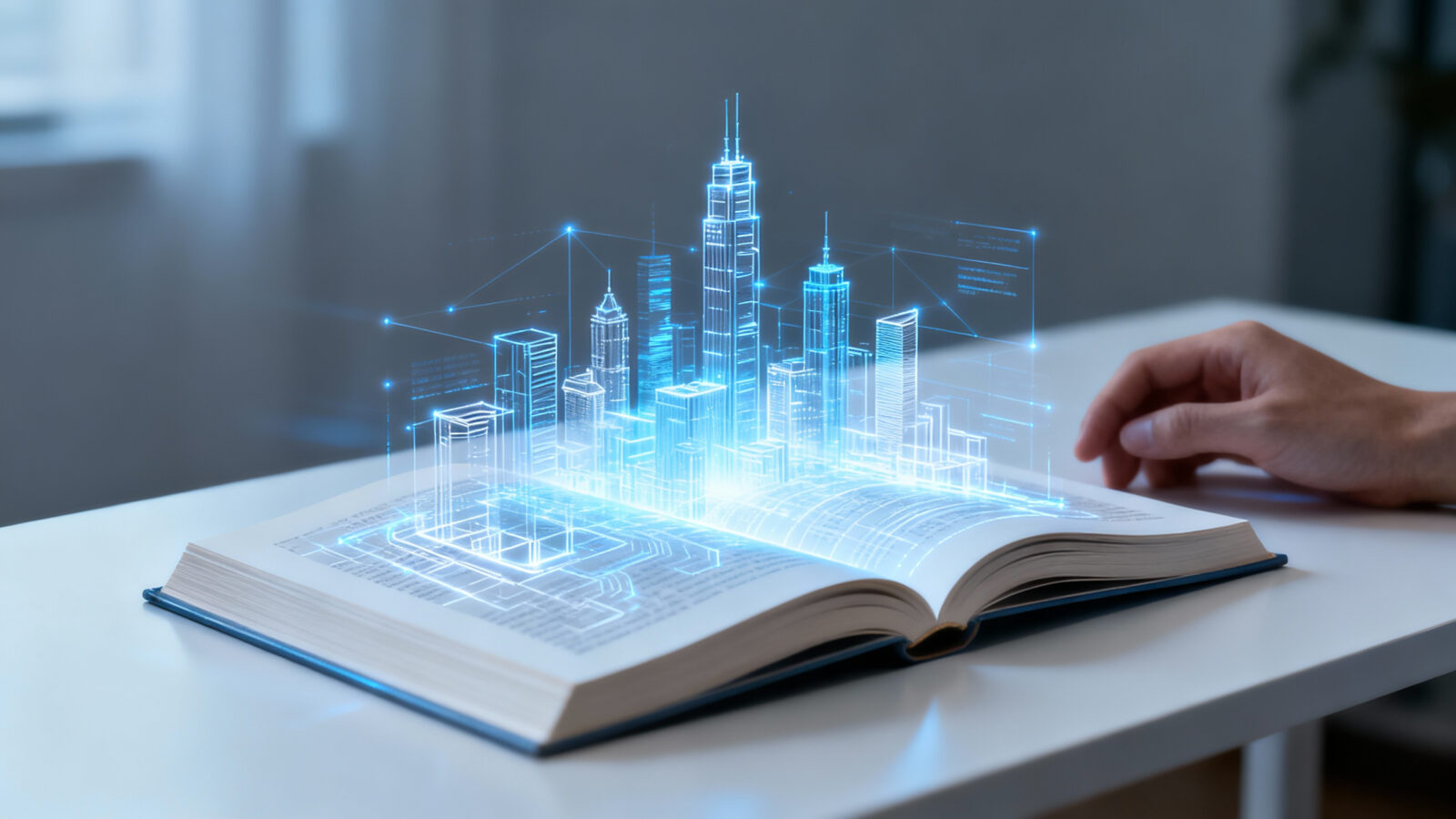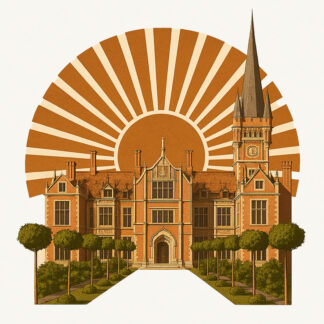In the desert, every path begins as a line of intention. Before there is a road, there is a decision to connect — to link one life, one idea, one horizon to another. Civilization has always been measured by what it chooses to unite.
The United Arab Emirates was built on this quiet mastery: the ability to join what others thought irreconcilable — sky and sand, water and flame, faith and futurism. Where the world once saw emptiness, the Emirates saw possibility. They drew invisible lines across the desert and called them vision, turning silence into skylines.
And yet, even among the towers of glass and the shimmer of steel, the most powerful bridge has never been made of stone or light — but of awareness. Beneath every structure lies another kind of architecture: the one that shapes thought, perception, purpose. It is this invisible infrastructure — the architecture of consciousness — that sustains everything visible.
Empires have risen on trade routes and highways; the next will rise on pathways of understanding. The world is learning that prosperity built only on industry is fragile, but prosperity built on clarity, empathy, and awareness can endure. The nations that invest not only in energy grids and data networks but also in the mind’s capacity to see wisely and act humanely will be the ones that flourish when others falter.
It is in this sense that consciousness becomes the new infrastructure — the unseen system that supports all others. It is a bridge between cultures, a stabilizer in uncertainty, a reservoir of renewal. The Emirates already embody this truth in their balance between innovation and inner grace.
Every city begins with a foundation. Every era begins with a way of seeing. And now, as the world stands between the tangible and the digital, between matter and meaning, a new kind of foundation is being laid — not beneath our feet, but within our awareness.
It is here, in this meeting of vision and reflection, that the next great construction begins.
When Infrastructure Turns Inward
Every nation builds its strength upon foundations it cannot always see. Roads, ports, and towers may define a skyline, but what truly sustains a civilization is the architecture within — the invisible systems that shape how people think, feel, and act together. The modern world calls it soft infrastructure, yet its essence is anything but soft. It is the quiet discipline of perception, the refinement of thought, the quality of collective awareness that determines whether progress becomes harmony or merely noise.
In every great civilization, material brilliance has always followed an inner order. The ancient scholars of Persia, Greece, and Andalusia understood that a society’s endurance depends less on the abundance of its resources than on the coherence of its mind. Empires have not fallen because their stone crumbled, but because their consciousness fragmented. When meaning dissolves, structures soon follow.
To invest in consciousness is, therefore, to build the most resilient form of infrastructure — one that does not erode under pressure or decay with time. It means cultivating citizens who can focus amid distraction, create amid uncertainty, and act with empathy amid complexity. These qualities cannot be imported or automated; they must be designed into the culture itself, like the geometry that gives a dome its strength.
Education, technology, and governance are the visible scaffolds of progress, but their durability depends on what they rest upon: attention, imagination, and inner balance. When a nation teaches its people to think deeply, to perceive clearly, to remain centered even in speed — it builds not just industries, but integrity.
The cities of tomorrow will not compete by the height of their towers but by the depth of their understanding. And those who learn to build inwardly — who recognize consciousness as a form of national architecture — will find that their prosperity does not merely expand; it evolves.
When Consciousness Becomes an Economy

Every age discovers a new form of wealth. Once, it was land. Then it was labor, machinery, data. But as the world grows saturated with all that can be counted, value begins to migrate toward what cannot. The next great economy will not be built on extraction, but on attention; not on possession, but on perception. It is forming quietly — an economy of consciousness — in which nations that learn to cultivate awareness, empathy, and creative intelligence will shape the future far more than those who only refine technology.
In this new landscape, the mind itself becomes a form of capital. Its quality determines the clarity of innovation, the ethics of leadership, the harmony of communities. Every insight, every act of deep understanding is a renewable resource — inexhaustible, infinitely scalable. It is the subtle foundation behind every sustainable enterprise, every scientific breakthrough, every cultural renaissance.
Across the world, the first signs of this transformation are visible. Cities that integrate mindfulness training for public servants report sharper decision-making and fewer conflicts. Companies that develop emotional intelligence alongside skillsets see measurable increases in creativity and trust. Universities combining inner development with technology produce innovators capable not only of invention but of wisdom. The link between consciousness and prosperity, once poetic, is now empirical.
The question for nations, then, is no longer whether to invest in consciousness — but how.
Do they treat it as a private pursuit, left to individuals, or as a public infrastructure worthy of collective cultivation? Do they understand that a generation trained to observe its thoughts with clarity will also design its systems with clarity?
Some of the most visionary societies have already begun this quiet revolution. They are creating centers where inner science meets outer innovation, where learning to focus, reflect, and collaborate becomes as essential as learning to code. These are not temples or laboratories, but something between — spaces where intellect and introspection share the same table.
One such initiative, Mind University, embodies this principle in practice. It does not preach philosophy; it engineers awareness. It treats consciousness not as mysticism, but as a measurable human faculty — one that can be trained, expanded, and applied to education, health, governance, and design. Through research, experiential learning, and subtle technological tools, it explores how the inner dimensions of the human being can serve as the ultimate renewable resource.
Imagine an economy where the primary export is insight; where the currency is trust; where the infrastructure is empathy; and where innovation is measured not only by speed, but by meaning. Such an economy rewards nations that can nurture stillness amid acceleration, wisdom amid abundance, and depth amid data.
This is not idealism — it is the next logical evolution of global growth. For centuries, humanity has built outward: roads, networks, empires. The coming century will belong to those who build inward — to civilizations that understand that the mind, properly cultivated, is the most advanced technology on Earth.
And perhaps the real question is not whether consciousness can become an economy, but whether any economy can thrive without it.
Why the UAE Is the Ideal Home for This Vision
From the shimmering cityscapes of Dubai to the ancient dunes of the Arabian desert, the United Arab Emirates has long been a place of convergence — where tradition meets daring, and heritage meets horizon. What makes the UAE particularly compelling for a project like this is not simply its ambition, but the way that ambition has coherently embraced both infrastructure and consciousness. The world sees its skyline and innovation hubs; here, the vision also reaches inward, into the realm of how people think, feel, and connect.
Consider the Dubai Future Foundation, whose mission is “to reimagine, inspire and design the future of Dubai in collaboration with our public and private sector partners”. This is not just about roads and buildings—it is about systems of being. The Vision: “to make Dubai one of the world’s foremost future cities”. Notice the shift: from visible infrastructure to underlying capacities. Linked to that is the Dubai Future Academy, launched in 2017, which emphasizes “Futures Literacy, Human Skills, and Futures Methodologies” alongside technology. It recognises that you cannot build a future on tech alone; the human system must evolve in parallel.
Similarly, education in the UAE is evolving. Schools in Dubai are adopting holistic educational approaches that encourage curiosity, self‐direction, and emotional awareness—not just academic rote learning. And the UAE’s younger generation is seeing programs aimed at ethical AI, meditation and well‐being, and integrative learning environments.
In effect, the UAE is not waiting to become a “future city”; it is already becoming a city of futures — where awareness, creativity, and balance are as vital as architecture and trade.
This duality — outward infrastructure and inward architecture — makes the UAE a uniquely fertile ground for initiatives centered on consciousness as infrastructure. In a nation that holds innovation and tradition in delicate harmony, a vision that says “we build the inner as much as the outer” finds a natural home. It aligns with the country’s deeper narrative: that the next stage of development rests not only in what is constructed, but in what is understood.
In that spirit, this project does not ask the UAE to turn away from its future; rather, it offers a way to deepen it — to continue the same legacy of bridging worlds, now between matter and mind.
When the Human Becomes a City

Every city, at its heart, is an act of imagination. It begins as an invisible pattern of connection — a vision of how life might flow, how energy might move, how people might meet. In that sense, the human being is the oldest city of all. Within us are avenues of thought, towers of memory, bridges of empathy, and quiet sanctuaries of reflection. Consciousness is not merely a metaphor for infrastructure; it is its original blueprint.
If the modern world builds outward, perhaps the wiser path now is to build inward — to illuminate the inner city. Just as planners design systems for transport, power, and communication, so too can we design systems of awareness, balance, and understanding. The electrical grid of a civilization is mirrored by the nervous system of its people; the harmony of a skyline reflects the coherence of their minds.
When we speak of Mind University, we speak not of walls and corridors, but of neighborhoods of insight and districts of clarity. It is a city of consciousness — one that grows through study, dialogue, and shared presence. Here, the mind becomes infrastructure for light itself: thought transforms into architecture, empathy becomes energy, wisdom turns into motion.
The bridges we build within ourselves become the bridges between us. The more illuminated the inner city, the more radiant the world it shapes. And perhaps that is the quiet promise of this new era — that the most advanced civilization will not be measured by what it constructs, but by what it awakens.
The New Architecture of Civilization
For centuries, humanity has built outward — roads crossing continents, towers piercing the clouds, networks linking every corner of the earth. These creations have changed how we live, but not always how we are. Beneath the achievements of industry lies a quiet imbalance: a world heavy with material brilliance yet light in inner harmony. We have mastered matter, but the art of coherence between matter and consciousness remains the unfinished architecture of our time.
The civilizations that will endure are those that understand this balance — that every physical structure needs a spiritual foundation, every economy a moral rhythm, every innovation a moment of stillness. A bridge of steel without a bridge of understanding eventually rusts. A city of light without inner illumination eventually dims.
The United Arab Emirates stands at the threshold of embodying this next form of civilization — one that joins the tangible and the subtle, the external and the inward, progress and peace. Its vision already reaches beyond commerce and construction; it seeks meaning, continuity, and grace. That is why it feels less like a nation building the future and more like a civilization remembering it.
As the world enters a century defined not by expansion but by integration, the true infrastructure of humanity will be consciousness itself — the capacity to see clearly, act wisely, and live in harmony with the unseen laws that govern life. When a society learns to build from that light, it becomes not only prosperous but timeless.
And so, the next era begins — an era where the greatest architecture is invisible, the tallest towers are made of understanding, and the richest nations are those that dare to illuminate both matter and mind.



